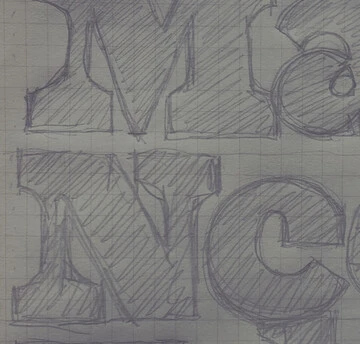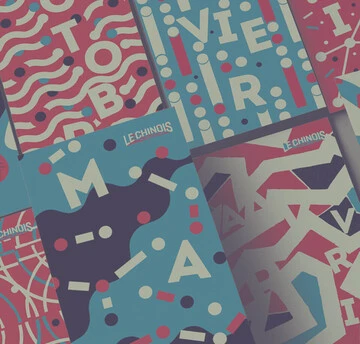Introduction to Font APIs.
Typography is a crucial element in web design, shaping the visual appeal and readability of online content. In the realm of web development, Font APIs have emerged as powerful tools that empower designers and developers to elevate their typography game. In this blog, we’ll delve into the fascinating realm of Font APIs, uncovering their significance, usage, and the impact they have on enhancing the aesthetics and user experience of web applications.

Understanding Fonts — Their Impact and how they evoke emotions and convey messages.
Fonts transcend mere text; they have the power to shape emotions, guide users, and define brand identities. The world of web design is enriched by the myriad of possibilities that typography brings to the table. By understanding the nuances of fonts, designers can craft experiences that resonate with users, elevate brands, and contribute to the artistry of the digital landscape. The journey through fonts is a journey through visual storytelling, where every typeface tells a tale, and every design decision speaks volumes. For instance, choosing the Right Typeface say between Serif vs. sans-serif can define the harmony and readability of font pairs used in the design and act as a fundamental difference between a cohesive and non-cohesive design.
Font APIs Unveiled — Understanding what Font APIs are, how do they work and why choose Font APIs over traditional font embedding.
Font APIs (Application Programming Interfaces) are services provided by font providers or platforms that allow developers to access and integrate custom fonts into their websites or applications programmatically. The typical workflow involves the following steps — 1) API Registration, 2) Font Selection, 3) API Integration, 4) API Request, 5) API Response, 6) Font Integration and finally 7) Font Rendering.
The font APIs allow developers to fetch font resources dynamically from the provider’s servers instead of manually embedding fonts into the project’s codebase, thereby providing developers with 1) Increased flexibility and customization, 2) Improved performance, 3) Versioning control, 4) Reduced complexity, 5) Ensuring Legal/Licensing Compliance, 6) Ease of Update and 7) Global Availability.
In essence, Font APIs offers a modern and efficient way to handle typography in web projects compared to traditional font embedding methods, allowing developers to focus on design and functionality while leaving the complexities of font management to specialized services.
Popular Font APIs Providers — A brief Introduction.
There are several popular font API providers that offer a wide range of services for web designers and developers to integrate into their projects. Here are some well-known options:
-
Google Fonts API: Google Fonts is one of the most widely used font APIs. It offers a vast collection of open-source fonts that can be easily integrated into websites. The API provides an extensive selection of font families, weights, and styles. For details, refer to https://developers.google.com/fonts
-
Adobe Fonts API (formerly Typekit): Adobe Fonts offers a library of high-quality fonts that can be seamlessly integrated into creative projects. It provides a range of fonts suitable for web and print design. For details, refer to https://developer.adobe.com/fonts/.
-
Monotype Fonts API: Monotype Fonts offers a large collection of fonts that can be accessed and integrated into web and desktop projects using their fonts API. They provide a range of high-quality and professionally designed fonts integrated with font technologies such as font similarity, font pairing, identify font from an image, contextual recommendation etc that work on their in-house and 3rd party fonts. For details, refer https://fonts-api.monotype.com/apis
Legal Considerations — Licensing and Usage Rights
When integrating fonts into design projects, it’s crucial to grasp the legal intricacies related to font licensing and usage rights. While providers like Google Fonts, Adobe Fonts, or Monotype Fonts generally handle licensing agreements, it remains vital for users to scrutinize terms of use to ensure adherence to their design project’s demands. Additionally, it’s important to note that converting fonts into various formats or utilizing them for print and digital applications might influence the legality of their usage. As such, users must diligently examine the license and usage terms.
Furthermore, it’s worth emphasizing that Fonts, akin to other forms of creative content, are safeguarded by copyright. The categorization of fonts as either Free or Commercial Fonts dictates the extent of usage, distribution, and modification rights for users within their projects. When acquiring fonts for web or desktop applications, users should prioritize licenses that offer explicit permissions tailored to their intended usage.
By comprehending font licensing and usage rights, users can ensure their design projects uphold legal compliance and creative attribution. This proactive stance not only helps pre-empt legal complications but also establishes the groundwork for ethical design practices.
Future Trends in Web Typography with Font APIs
The world of web typography is continuously evolving, and Font APIs are at the forefront of driving these changes. As technology advances and design trends shift, several exciting trends are emerging in web typography that leverage the capabilities of Font APIs. Here’s a glimpse into the future:
-
Enhanced Font Discovery: Font APIs may evolve to provide more advanced font discovery features. Machine learning algorithms could analyse design preferences and suggest fonts that align with a project’s aesthetics, saving designers time and helping them discover new typefaces.
-
Typography in Conversational UI: Conversational User Interfaces, like chatbots, are becoming integral parts of digital experiences. Font APIs can play a role in rendering fonts in chat interfaces, contributing to a consistent and engaging user experience.
-
Typography-as-a-Service: The concept of Typography-as-a-Service, where Font APIs offers a comprehensive suite of typography-related tools, including font recommendations, testing, optimization, and customization.
Summary
In the future, Font APIs are poised to go beyond font delivery, becoming integral to cutting-edge design practices. As designers embrace new technologies and push boundaries, Font APIs will be pivotal in shaping the next era of web typography. Font APIs have already revolutionized web typography, providing designers and developers with tools to enhance visual appeal, readability, and user experience. With Font APIs, you can break free from system font limitations and create captivating web experiences. As the web evolves, Font APIs will continue to play a vital role, enabling creative experimentation and pushing design boundaries in the digital landscape. Embrace Font APIs to unlock a world of typographic possibilities for your digital projects.
This blog has been written by Pranav Gupta (Senior Product Manager — Monotype API Business)











